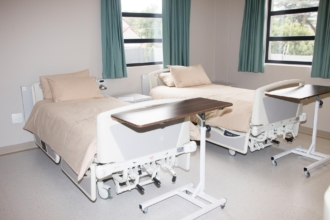Creating a hospice business development plan
- Research the hospice market
- Formulate a referral strategy
- Develop a marketing strategy
- Create clear financial projections
Running a hospice business requires a lot of empathy, as patients are facing their final days. However, you also need capital, operational know-how, management skills, and well-considered strategies to get your business off the ground and maintain profitability.
Keep reading to learn what actions you can take to create a solid hospice business development plan that keeps your business open for many years to come.
Building a hospice business development plan: 4 to-dos
1. Research the hospice market
Jim Palazzo, CEO and founder of Transitions Care, says an important first step when creating a hospice business development plan is to research the current hospice landscape. “You must understand the industry you operate in and the market you want to serve. Study the competition, research your target audience, and reveal opportunities for growth.”
Here’s how you can apply this advice in practical terms:
- Evaluate the total population of your county and state, as well as the number of hospice deaths.
- Research competitors’ market presence in your local area, determining how many facilities you’re up against and their average census — the number of patients under their care.
- Evaluate the costs of starting a hospice.
- Learn as much as you can about the demographics of hospice patients in the area you serve.
2. Formulate a referral strategy
Referrals are a key way for a hospice to get new patients. That’s why Palazzo says it’s important to consider a diverse pool of referral sources — such as hospitals, skilled nursing facilities, and other healthcare facilities — to grow your census.
“Hire a candidate for business development in the area you are looking to serve, who can generate partnerships and lead the team through periods of growth,” says Palazzo. “You should hire this candidate before accepting patients so you can properly establish a presence in the area and ensure you have a solid pipeline in place.”
3. Develop a marketing strategy
Referrals shouldn’t be your only source of new patients. As part of your business development plan, you’ll need a marketing strategy for reaching out to the patients themselves — along with their family members.
Use what you learned in your research to develop the strategy. Palazzo shares three key marketing tactics you can use:
Create and distribute marketing collateral in print
In 2018, more than 85 percent of Medicare hospice patients were 65 years of age or older, according to the National Hospice and Palliative Care Organization. It’s well known that people in this age demographic are less likely to be tech-savvy — they’d often rather have items in print to review.
So be sure to have printed versions of your marketing collateral not only for patients, but also for their spouses and other family members. “The collateral should be in line with your brand and highlight your unique offering. Above all, it should be informative and easy to understand,” says Palazzo.
Use digital advertising
Patients aren’t the only ones who’ll be making the decisions for their care. Younger family members, such as kids and even grandkids, are frequently involved in the decision-making process.
These individuals may be either millennials or members of Gen Z, so a digital approach is typically the more appropriate way to reach them. “Direct Google SEM funding and paid advertising on social media platforms like Facebook to reach these individuals and encourage them to choose your hospice for their loved one’s care,” Palazzo advises.
Take advantage of billboards
Never underestimate the power of in-person marketing visibility, especially in the right location. Palazzo says billboards near medical facilities are great places to advertise. “You can use them to target potential clinical staff, patients, and prospective referral sources in the health system.”
4. Create clear financial projections
One step would-be owners often overlook when creating a hospice business development plan is forecasting future revenue and expenses. Figuring out how to bring in business is irrelevant if you’re not considering overall profitability.
Consider the up-front costs of starting your hospice, the size of your facility, the number of beds, the amenities you’ll offer, the staff salaries, and a host of other operational aspects that will be required to run your business. Then estimate how many new patients you’ll bring in through your marketing and business development efforts. Project these figures through the first three to five years and set appropriate financial goals throughout that timeframe so you have a clear path of what you need to achieve.
Relieve growing pains with Jotform
Executing on a solid hospice business development plan means you’ll quickly have a booming facility. Growth is good, but it can also strain most homegrown operations. Be prepared for growth with Jotform Enterprise, secure hospice management software that helps your hospice be more efficient so you can focus less on paperwork and more on patient care.
One of Jotform’s key features is its easy-to-build forms that can help you do more in less time. Easily address hospice referrals, transfers, nursing assessments, and a number of other hospice needs.
You can also easily build approval workflows, simplify scheduling, take advantage of analytics and reporting capabilities, and much more. Start building forms for your hospice business today.
Photo by Matthias Zomer


















Send Comment: